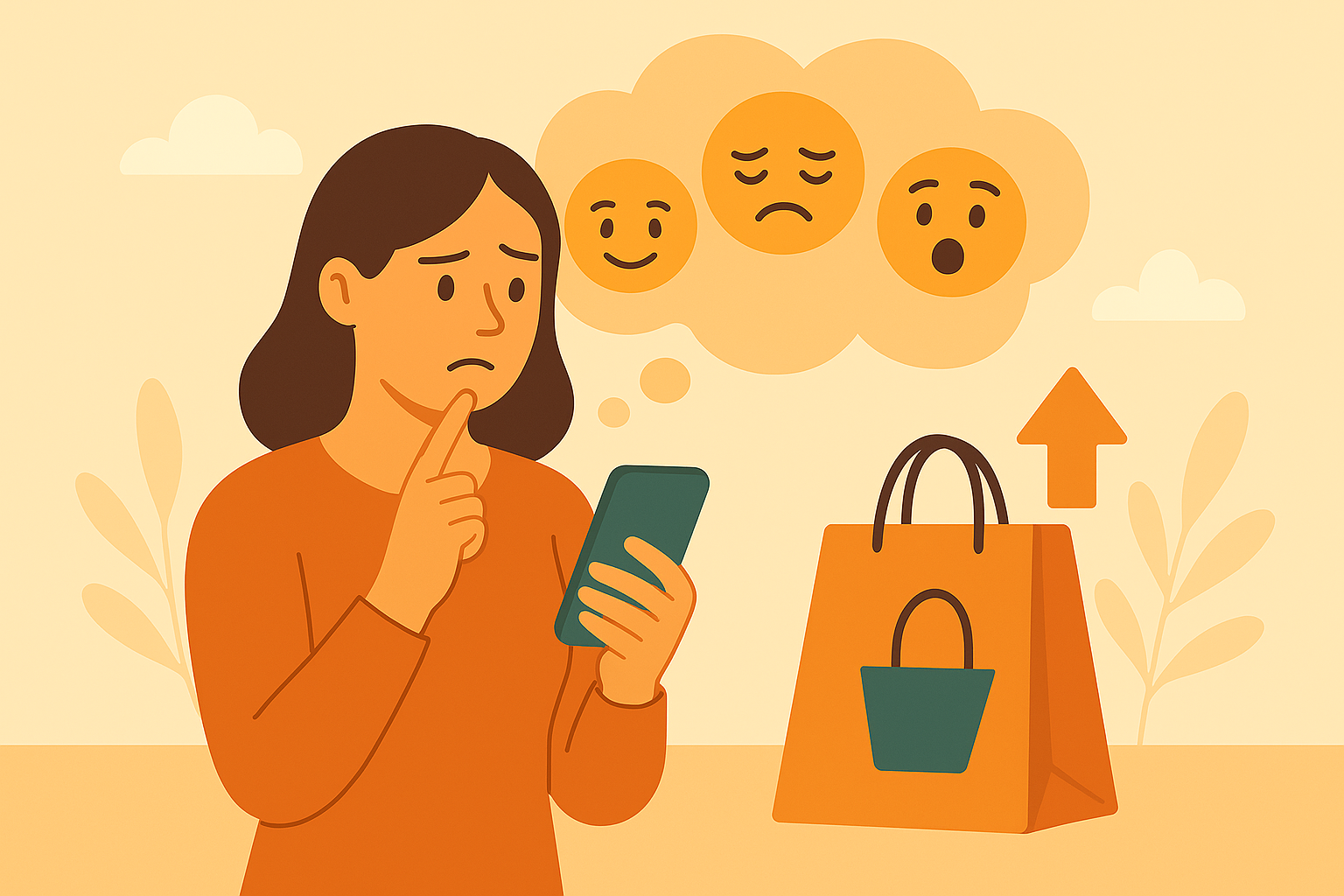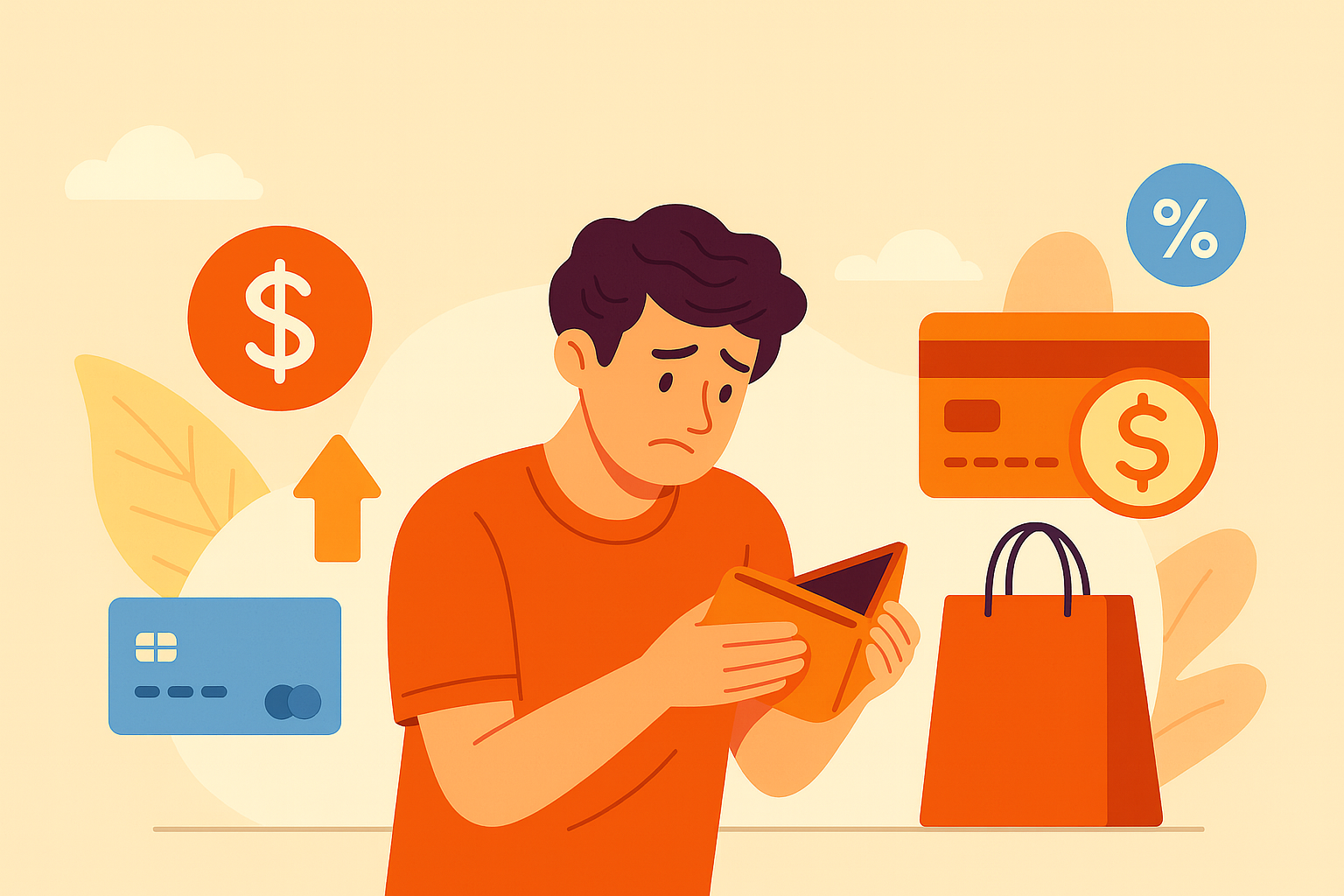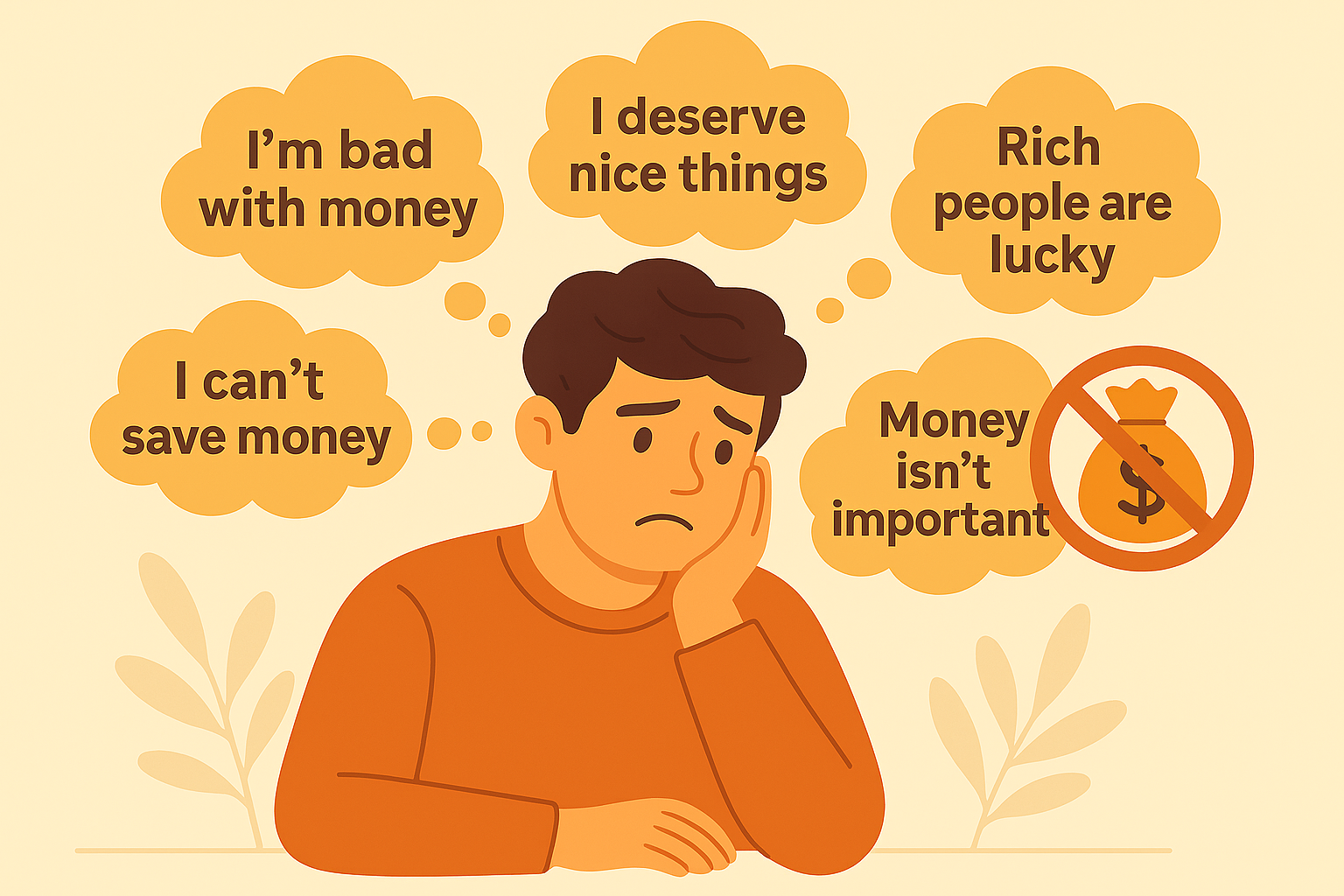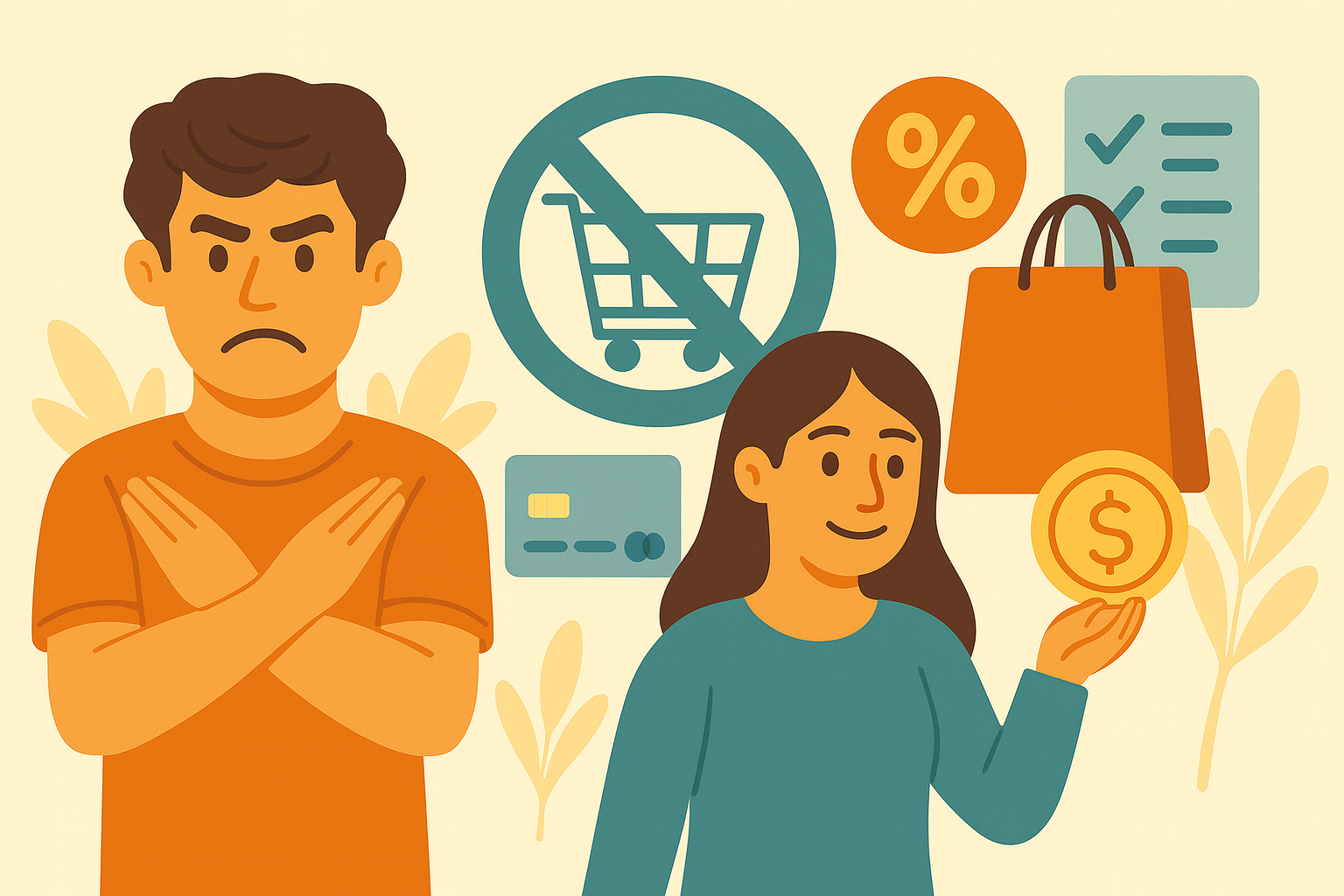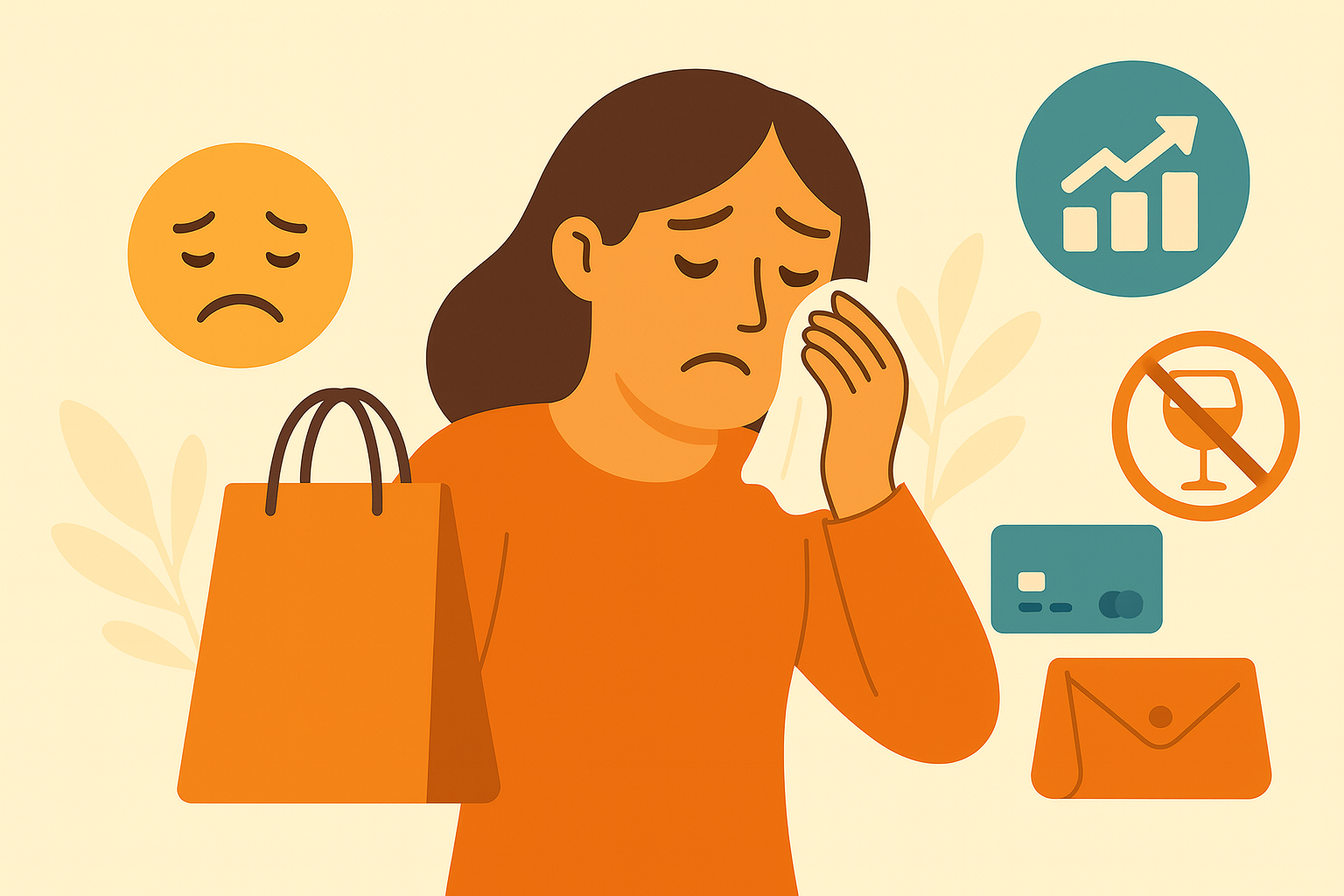Have you ever looked at your credit card statement and wondered where all your money went? Like, you know you bought stuff, but you can’t quite remember deciding to spend that much? That’s probably because you weren’t really deciding at all. You were being triggered. And once you understand your spending triggers, everything about your relationship with money starts to make sense.
Here’s the thing nobody talks about: overspending isn’t really about lacking willpower or being “bad with money.” It’s about getting hit with spending triggers you don’t even realize are there. And the worst part? These triggers are so sneaky that you think you’re making rational choices when really, something else is pulling your strings.
This guide will help you figure out what’s actually triggering your spending so you can finally stop the cycle. Because once you see it, you can’t unsee it. And that’s when real change happens.
What’s Really Happening When You Overspend
Think about the last time you bought something you didn’t plan to buy. What was going on right before that? Were you stressed? Bored? Scrolling Instagram? Walking through your favorite store?
A spending trigger is basically anything that flips the switch in your brain from “I’m fine, I don’t need anything” to “I need to buy this right now.” It could be an emotion, a place, a person, a time of day, or even just a habit you’ve developed without realizing it.
The tricky part is that spending triggers operate mostly below your conscious awareness. You genuinely think you’re making a decision to buy something, but really, you’re just responding to a trigger that got activated. It’s kind of like when you smell cookies baking and suddenly you’re hungry even though you just ate lunch. Your brain gets triggered and creates a desire that wasn’t there a minute ago.
The Emotional Spending Trap
Let’s start with the big one because this is probably affecting you more than you realize. When was the last time you went shopping because you had a bad day? Or because you were anxious about something? Or even because you were celebrating and feeling good?
Emotions are massive spending triggers. Your brain is literally wired to seek pleasure and avoid pain, and shopping gives you a quick hit of dopamine that makes you feel better temporarily. Bad day at work? Shopping makes it better. Feeling lonely? Shopping fills the void. Stressed about money? Shopping distracts you (yeah, the irony is painful).
The problem is that emotional spending creates a cycle. You feel bad, you shop, you feel good for about ten minutes, then you feel worse because now you have less money and stuff you don’t need. So what do you do? Shop again to feel better. It’s like trying to fix a leak by adding more water.
Pay attention to what you’re feeling right before you decide to browse Amazon or head to the mall. If you’re using shopping to change your emotional state, that’s your trigger talking. And here’s what really works: when you catch yourself reaching for your wallet because you’re feeling something intense, that’s your cue to do literally anything else. Call a friend. Go for a walk. Journal. Blast music and dance in your kitchen. Whatever works for you, as long as it’s not spending money.
Your Environment Is Setting You Up
Some places are just dangerous for your wallet, and you probably already know which ones. Maybe it’s Target, where you go in for paper towels and leave with $200 worth of stuff you “needed.” Or maybe it’s the mall, where the layout is specifically designed to make you walk past as many stores as possible. Or even just your couch at 10 PM with your phone in your hand.
Environmental spending triggers are sneaky because they feel so innocent. You’re just browsing. You’re just looking around. But stores spend millions of dollars on layouts, lighting, music, and even smells that are scientifically proven to make you spend more. That’s not an accident.
You might need to accept that you can’t casually browse certain stores. Like, at all. Going in planning to “just look” and coming out having spent money you didn’t intend to spend, every single time? That’s not a coincidence. That’s an environmental trigger working exactly as designed.
If there’s a store where you consistently overspend, you need to either avoid it completely or put serious guardrails around your visits. Make a list before you go. Set a spending limit. Use cash only. Use curbside pickup. Whatever it takes to break the pattern and remove the environmental trigger from the equation.
The Social Media Money Drain
Let’s talk about how Instagram and TikTok are probably costing you way more than you think. Every time you scroll past someone’s new outfit, their renovated kitchen, their vacation photos, or their latest haul, your brain is taking notes. And those notes sound like “I need that too” even when you were perfectly happy five minutes ago.
Social spending triggers are brutal because they tap into our deep human need to fit in and keep up. You see your friend with a new designer bag and suddenly your perfectly good bag feels shabby. An influencer raves about some product and now you’re convinced you can’t live without it. Your coworker gets the latest iPhone and yours suddenly feels outdated even though it works fine.
Here’s the reality check you need: most of what you see online is either sponsored content or a carefully curated highlight reel. That influencer might be getting paid to promote that product. Your friend might have gone into debt for that bag. The person with the perfect kitchen might be house-poor and stressed about money.
You don’t need to keep up with anyone. Their financial situation isn’t yours. Their priorities aren’t yours. And their spending decisions definitely shouldn’t dictate yours. If scrolling through social media consistently makes you feel like you need to buy stuff, it’s time to unfollow, mute, or take a break from those accounts. Your bank account will thank you.
When Time Becomes Your Enemy
This one surprises most people when they finally notice it, but you probably have danger zones in your schedule where you’re way more likely to overspend. Maybe it’s Sunday evening when you’re dreading the work week. Or late at night when you’re tired and your judgment is impaired. Or right after payday when your account feels flush.
Time-based spending triggers are all about patterns. For two weeks, track not just what you buy but when you buy it. You might discover that you online shop every Thursday night, or that you hit the drive-thru every Friday afternoon, or that you go on shopping sprees at the end of every month.
Once you see the pattern, you can interrupt it. If late night is your danger zone, delete shopping apps from your phone and only access them from your laptop. If payday makes you feel rich and reckless, set up automatic transfers to savings the same day so the money’s gone before you can spend it. If weekends trigger spending, plan specific activities that don’t involve shopping.
Your spending triggers aren’t random. They’re predictable. And predictable means you can plan around them and take back control of when and how you spend your money.
When Marketing Pushes Your Buttons
Businesses spend billions of dollars figuring out exactly how to trigger you to spend. Those “24 hours only” sales. The “only 2 left in stock” messages. The abandoned cart emails with special discount codes. The free shipping threshold that makes you add one more item to your cart. It’s all designed to trigger urgency and FOMO.
Marketing spending triggers work because they create artificial scarcity and time pressure. Your logical brain knows that sale will probably happen again, but your triggered brain says “buy it now or miss out forever!” So you buy things you weren’t even thinking about five minutes ago.
Your inbox might be a constant stream of temptation right now. Every store you’ve ever shopped at sending you multiple emails per week, all designed to get you to spend money. An unsubscribe spree could change your life. Every single marketing email gets unsubscribed. Turn off push notifications from shopping apps. Install ad blockers.
When you only hear from stores when you actively decide to visit them, not when they decide to trigger you, it makes a massive difference. If you’re shopping in response to an email or ad rather than because you actually need something, you’re being triggered. Cut off the trigger at the source and watch your spending drop.
The Autopilot Spending Problem
Sometimes your spending triggers aren’t dramatic or emotional. They’re just habits you’ve developed without really thinking about them. You always get coffee on your way to work. You always browse HomeGoods on Saturday. You always buy something when you’re at the checkout line.
Habit-based spending triggers are dangerous precisely because they’re so automatic. You’re not deciding to spend money, you’re just following a script your brain has learned. And because it doesn’t feel like a decision, it doesn’t trigger any of your usual money awareness.
Think about your regular routines. Where does spending happen automatically? Maybe you always stop at Target on your way home from the gym. Maybe you browse Amazon every night while watching TV. Maybe you grab lunch out every day without even considering whether you want to.
These habits aren’t serving you, they’re costing you. And breaking them requires replacing them with new habits, not just trying to stop cold turkey. Instead of a Saturday shopping trip, plan something else for that time. Instead of browsing shopping apps during downtime, pick up a book or call a friend. Fill the habit slot with something that doesn’t drain your bank account.
How to Actually Figure Out Your Triggers
Okay, so now you know the types of spending triggers that exist. But which ones are affecting you specifically? Here’s how to find out, and it’s simpler than you think.
For the next two weeks, every time you spend money on something non-essential, write it down. But don’t just track what you bought and how much you spent. Track the context. Where were you? What time was it? How were you feeling? What prompted you to shop? Who were you with?
Use your phone’s notes app or just a regular notebook. The point is to capture what’s happening around your spending, not just the spending itself. This isn’t about judgment or guilt. It’s about data collection so you can see patterns you’ve been missing.
After two weeks, sit down with your notes and look for patterns. Ask yourself: When do you tend to overspend? What situations consistently lead to unplanned purchases? Which emotions show up right before you buy things? Are there specific places or people that trigger spending?
When you see the patterns written out in front of you, it’s like suddenly seeing the Matrix. You can’t believe you didn’t notice it before, but now it’s so obvious. Most people find that about 80% of their unnecessary spending happens in just three or four situations. Once you see that, you know exactly what to tackle first.
Making Your Triggers Work For You
Here’s the beautiful part about understanding your spending triggers: once you know what they are, you can actually do something about them. You’re not fighting some mysterious force anymore. You’re dealing with specific, identifiable triggers that you can plan around.
Start with your biggest trigger, the one that’s costing you the most money. If it’s emotional spending, develop a list of alternative activities for when those emotions hit. Feeling stressed? Go for a walk instead of opening shopping apps. Feeling sad? Call someone you love instead of browsing online.
If your trigger is environmental, reduce your exposure. Stop going to stores that consistently make you overspend. Unsubscribe from marketing emails. Unfollow social media accounts that make you feel like you need more stuff. Delete shopping apps from your phone so there’s more friction between the urge and the action.
If your trigger is time-based, schedule something else for that time slot. If your trigger is social, suggest activities with friends that don’t involve shopping. If your trigger is habit-based, replace the spending habit with a new habit that serves you better.
You don’t have to be perfect. You’re not trying to never spend money again. You’re just trying to spend intentionally instead of being triggered into spending by forces you don’t control. That’s a huge difference, and it’s totally achievable once you know what you’re dealing with.
Start With Awareness, Everything Else Follows
Look, this probably feels like a lot right now. You’re sitting here thinking about all your spending triggers and feeling overwhelmed. But here’s what you need to remember: awareness is 90% of the battle.
You don’t have to fix everything today. You don’t even have to fix anything today. Just start noticing. For the next week, pay attention to what’s happening when you spend money. Ask yourself “what triggered me to buy this right now?” and write down the answer.
That’s it. Just notice and track. Don’t judge yourself. Don’t try to change anything yet. Just gather information about your own patterns. Because once you see your spending triggers clearly, the solutions become obvious. You’ll know exactly what needs to change because you’ll see the direct connection between the trigger and the spending.
The goal isn’t to feel guilty about past spending or to beat yourself up for being triggered. The goal is to understand yourself better so you can make different choices going forward. Your spending triggers aren’t a character flaw, they’re just patterns. And patterns can be changed once you know what they are.
So start today. Start now. Pick up your phone and create a note called “Spending Triggers.” The next time you buy something, write down what was happening right before. Do that for two weeks and see what you discover. Those patterns will tell you everything you need to know about where to start.
Just the fact that you’re here reading this means you’re already on your way to breaking the cycle. Most people never even realize they’re being triggered. You’re ahead of the game already, and now you have the tools to actually do something about it.


